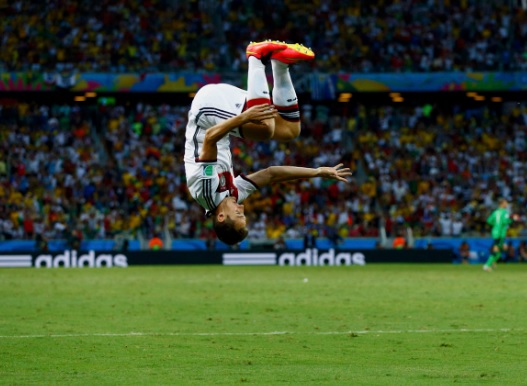Did you know that soccer is a multi-billion dollar global business? Now you know. In this article, we’ll use the example of FIFA World Cup to highlight soccer economics. Currently, World Cup 2018 is ongoing in Moscow, Russia.
The venue for World Cup 2022 is already decided. It will be held in Qatar in Asia.
The 68th FIFA Congress
FIFA works a head of the schedule and the vote on who will host the World Cup 2026 was cast on 13 June, 2018 during the 68th FIFA Congress held in Russia. Canada, United States of America and Mexico will jointly host the prestigious event.
On the other hand, Morocco lost the bid to host the soccer matches because among other reasons, nine (9) out of the 14 stadiums promised in their bid were to be built after winning the bid. Secondly, Morocco was promising to put in place 25 new Bus Rapid Transit (BRT) systems before 2026. The trio (Canada, Mexico and USA) won the bid because they already have well established facilities such as stadium and mass transit systems. The three winning countries received 134 votes while Morocco received a distant 65 votes and 1 vote was cast for ‘none of the bids.’
Many changes have happened at the global soccer governing body since 2016 when the leadership changed hands to current President Gianni Infantino.
Russia 2018 Edition
A total of 32 teams are participating in 64 matches during this year’s FIFA World Cup. The matches are expected to increase to 80 by 2026.
FIFA Revenues
FIFA generates tons (billions) of money from various sources such as: ticketing, media, hospitality and marketing activities. The world body FIFA is planning to invest up to USD$4 billion in developing football by 2026.
FIFA Advancing Human Rights
At the international sports arena, FIFA is leading the way in promoting, protecting and upholding human rights. This commitment has been shown by the launch of Human Rights Policy and the FIFA Human Rights Advisory Board.
FIFA Forward Programme
FIFA believes in strengthening its member Associations and confederations. This might have pushed it to create FIFA Forward programme in order to achieve that goal. In that respect by 31st December, FIFA had released a total of USD$393 million for its 211 member Associations and six confederations.
FIFA World Cup is the leading asset of the world body. “The more we invest in football, the more we will all benefit,” Gianni Infantino, FIFA President.
FIFA Revenues and Expenditure in 2017
FIFA has a tradition of operating in four-year cycles. The current cycle is 2015-2018. This means the World Cup Event taking place in Russia was budgeted for during the current cycle. The Qatar World Cup has been budgeted for in the 2019-2022 cycle.
By December 2017, FIFA had generated $734 million in revenues. This is 20% more than the budgeted figure. FIFA is doing well. For the cycle 2015-2018, a total of $5,555 or 98% of the total revenue had been raised by December 2017.
In terms of investments, a total of USD$923 million was invested during the year.
In 2017, FIFA received its revenues from the following sources:
TV Broadcasting rights: This source of revenue raised the largest portion of revenues at $229 million in 2017. It’s a cash cow for FIFA. Those media houses interested apply through open tender processes. There are 5 entities with broadcasting rights in Sub-Saharan Africa. Spain and Italy enjoy World Cup coverage courtesy of Mediaset. The 2SPORT2 Consortium has the rights in Russia. ERT will be broadcasting the 64 matches in Greece. CCTV has China covered during the World Cup Session until 2022.
- Marketing Rights: This source of revenue raised $245 million through corporations such as Desports; Hisense; Qatar Airways, Vivo and Mengniu Group. The budget targeted form this source for the 2015-2018 cycle is $1,450 million.
2. Licensing Rights: This source of revenue for FIFA contributed $160 million in 2017. It majorly involves brand licensing.
3. Hospitality rights and ticket sales: This source of revenue generated $22 million since by December, 2017 already fans had requested for a total of 4.9 million tickets. Hospitality industry facilities such as hotels have to be approved by FIFA before the games begin.
4. Other income sources: FIFA also generates income from other sources such as FIFA Club World Cup 2017 which raked in $37 million; FIFA Quality Program; rental income; penalties and appeals. Finally,FIFA engages in the sale of film and video rights.
FIFA Partners
The following is a list of FIFA Partners:
- Adidas
- Coca Cola
- Hyundai
- KIA Motors
- Qatar Airways
- Visa
- Wanda
- Gazpromo
Look out for more updates about the FIFA World Cup 2018 in Russia and more!
Read More:
- ARGENTINA PESO COLLAPSE IS REAL
- Why Did FIFA Ban India Football Federation?
- New Zealand And Australia To Host 2023 Women’s World
- Spain Honor Barcelona Soccer Star Iniesta With A Statue For World Cup Winning Goal In 2010
GOT a story? RING Kerosi Dotcom on +254 784 10 46 63 or EMAIL info@kerosi.com


